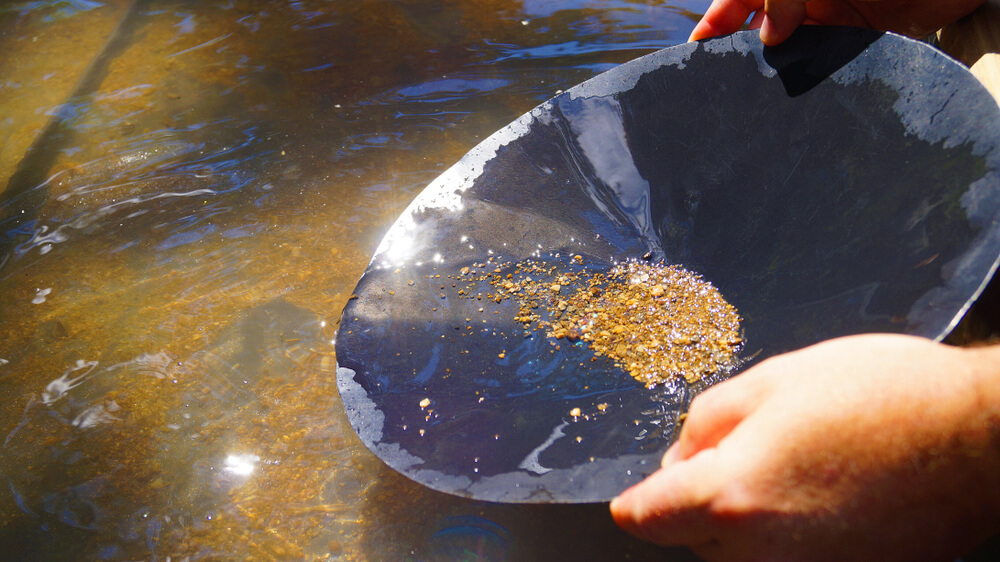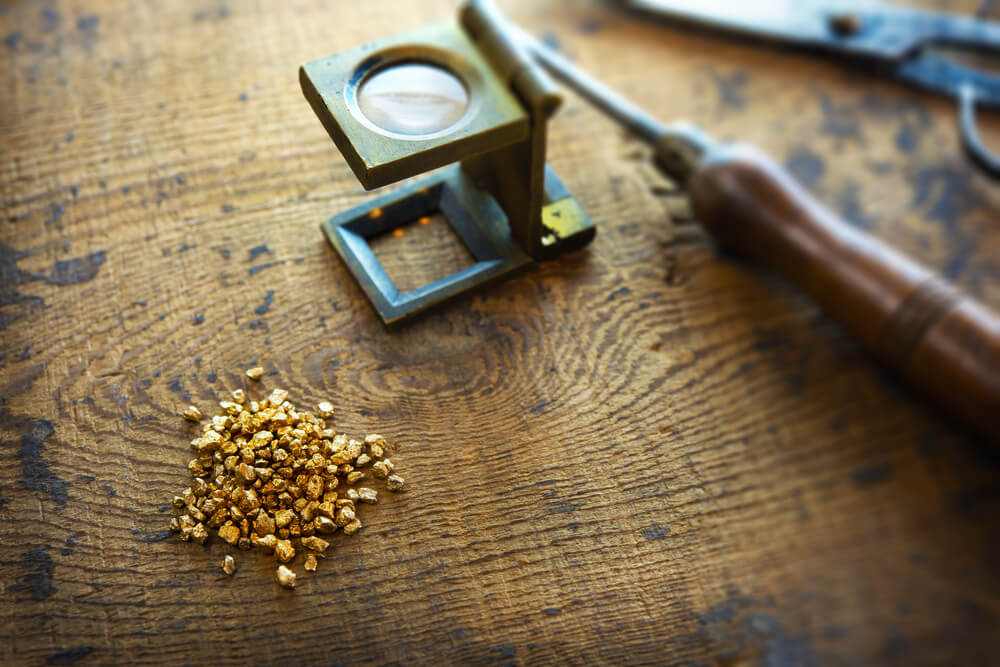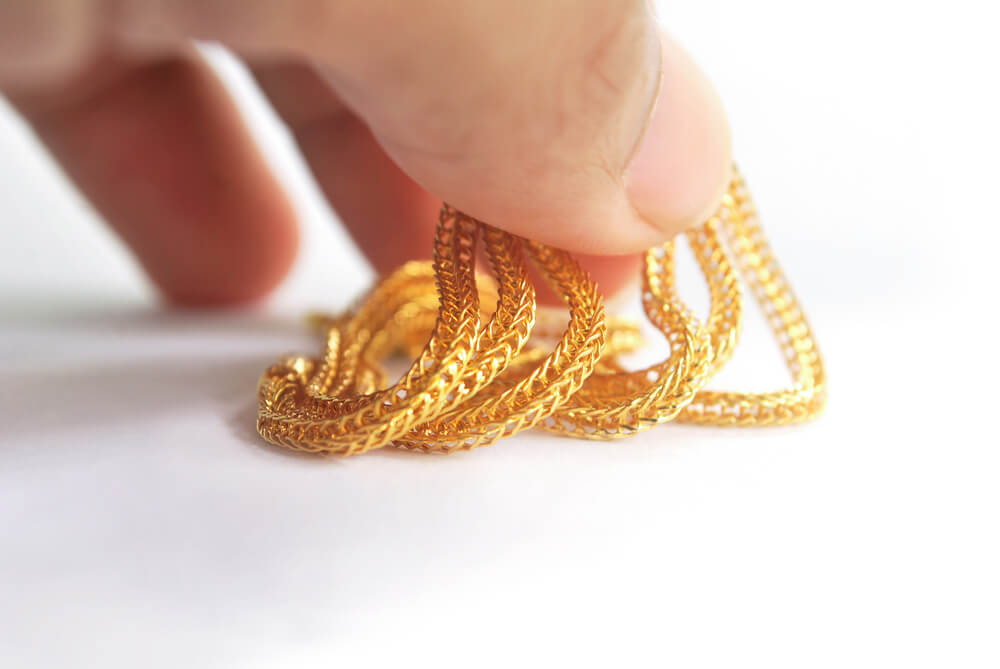
The Different Gold Purities
Gold has been a symbol of wealth, prosperity, and security for centuries. The precious yellow metal is used in multiple ways, from splendid jewelry pieces to making bullion gold coins and bars. Pure gold is also used in medical devices and other machines and components. The natural beauty of gold is undoubtedly widely admired. But gold is not always sold as it is. It assumes different avatars. Not just the form and design change, but gold can be different structurally too. In other words, not all gold you see is pure gold.

Gold is mixed with other metals to give it a spectrum of properties and colors. Gold is soft, and merging with other metals lends it rigidity it needs to survive as a piece of jewelry and coins. The less pure gold item becomes cheaper, the more affordable. Exploring the gold purity array means getting introduced to karat karats and how they serve as a reliable unit of measure for gold purity.
Table of Contents
In this article, we’ll primarily discuss the following to help you understand the topic better:
- A brief intro to gold purity
- An overview of gold karats and learning to find out how many karats is pure gold
- The different gold alloys and their colors
- Answers to some critical questions and more
Read more: Gold Purity Measurements
Read on to delve into the gold alloy intricacies, the diverse compositions and colors of gold, how they enable different people to align their choices with unique styles and personalities, and more.
What is the Purity of Gold?

The purity of gold is the amount of actual gold present in a finished gold piece. Gold is naturally pure (if you disregard the ores). But gold is extremely soft and easy to bend in its unadulterated form. As a result, gold is mixed with other metals to lend it the toughness it needs to become a more practical metal. The karat system is used to ascertain or measure the purity of gold. Millesimal fineness numbers are also used to denote the purity of gold and other alloys and metals.
What are Gold Karats? What are the Different Gold Purity Levels?
The purity of gold is measured in “karats.” It could be denoted as “k” or “Kt.” Karat measures the amount of pure gold in relation to other metals in a piece of jewelry, bullion, or other gold objects. The gold karat system begins at 24 and ends at 1. A karat represents 1 unit out of the total 24 karats. More karats mean more gold is present in a given piece. Karat stamps or marks are used with the number to denote gold karats.
The following are standard karat figures and what they denote:
- 24 karats (24k): 24k gold is the purest form. It is 99.9 percent pure gold, with no other metals used. But pure gold is soft and malleable and, therefore, typically used to make gold bars or coins only, not gold jewelry. Twenty-three karats denote 95.8 percent gold.
- 22 karats (22k): A 22k gold item is 91.6 percent pure gold; the remainder 8.4 percent is other metals, such as copper, aluminum, silver, etc. Twenty-two karats are the maximum purity gold jewelry can manage. A 22-karat purity is challenging as a more precise mix of metals is needed. Other metals are carefully added to pure gold, the base metal, to achieve the required composition. Since 22k is still a higher quality gold, fingernails could easily scratch it.
- 18 karats (18k): An 18k gold piece is 75 percent pure gold; and the remaining 25 percent is other alloys such as copper or silver. The non-gold portion is rarely a single metal. The 18-karat mix is commonly used in jewelry since it’s an optimal blend of purity and durability. It is more suited for everyday wear gold, such as engagement and wedding rings, and other wearable jewelry.
- 14 karats (14k): A 14k gold article contains 58.3 percent pure gold, and the leftover 41.7 percent is other metals. Fourteen-karat gold is practical.
- 10 karats (10k): A 10k gold piece is less gold and more alloyed metals at 41.7 percent pure gold and 58.3 percent other metals. Ten karats are the minimum a gold article must be to be classified as gold legally in most countries, such as the United States. It is the hardest of all gold alloys.
- 8 karats (8k): Eight karats are legally gold in some parts of Europe, such as Denmark and Greece. The karat level has a lot more copper and other metals than gold (33.3 percent) and, therefore, is more pink than yellow.
As mentioned earlier, millesimal fineness figures could also denote gold purity. For example, a gold alloy containing 58.3 percent pure gold could also be referred to as 585 instead of 14k. A gold article that is 91.6 percent pure gold could be referred to as 916 gold. Several European nations use decimal hallmark signs instead of gold karats. Millesimal fineness figures are usually rounded to three-figure numbers, and the fineness could slightly differ from the karat version.
Note that the other metals added could be precious metals, such as silver, and the proportions of each can vary significantly, changing the color of the gold alloy in the process. More on them below.
The Various Gold Alloy Colors
The color of gold varies as other metals are added to gold. The change in hue, however, is usually achieved at the 18k level, as there’s enough space for other metals to make their presence felt visually. Making a gold alloy assume specific colors is more complex than simply mixing gold with other metals. Here are the different hues gold could take when certain metals are added to it in particular proportions.
Yellow Gold
Although gold’s natural color is yellow, every piece of gold with a rich yellow tone is not pure gold, especially if it’s wearable jewelry. A yellow-gold alloy exists. The other metals typically added include copper and silver. The yellow could be reddish or overly yellow based on the different metals' quantity. Fine jewelry and daily wear jewelry are usually yellow gold.
Rose Gold
Also called pink gold, rose gold is pure gold mixed with copper. The copper content is usually 25 percent of the alloy’s makeup, or this type of gold is typically 18k gold. A lower karat number means greater copper content or a pinker-looking gold. If it’s 12 karats, pink gold will look like red gold. Several decades ago, the gold smelting process wasn’t as modern and advanced as today. As a result, gold frequently assumed a reddish hue due to the impurities without alloying it with copper.
White Gold
White gold is pure gold mixed with palladium, zinc, nickel, or other white metals. The alloy is silvery-white, looking more like silver or platinum. White gold is often considered an inexpensive alternative to platinum. To make white gold look more like one and give it sheen and brightness, it’s topped off with rhodium. The rhodium plating becomes essential if the alloy has a higher pure gold content. If not, white gold may look silvery white or even grey.
Other Less Common Gold Alloy Hues
Some other gold alloy colors include green gold, blue gold, purple gold, grey gold, and black gold. These colors are either relatively recent or rarely found on the market. Green gold is formed by blending fine gold with a mix of silver, zinc, and copper. Blue gold usually contains gallium or indium with gold. Purple gold primarily uses aluminum as its secondary metal. Black gold cannot be made by mixing metals alone. Some external intervention is needed.
Black gold is made by treating the gold’s outer surface with heat or a chemical solution to form a blackened layer. Electroplating is another method used wherein gold jewelry is doused in a black ruthenium or rhodium-containing electrolyte solution. Carbon coating could also be employed to create the blackened effect. Blue gold is another color that requires much work and perseverance to achieve.
If it hadn’t been for newer techniques for manipulating and coloring gold’s surface, gold alloy color options might have been limited to white and pink.
Read more: Karat vs Carat
Conclusion
For those new to the world of gold, even a small quantity of other metals mixed with gold could mean foul play. Only after you know better do you realize mixing different metals with the gold makes the particular piece robust and more practical, albeit less gold. An item can be considered gold even if it is not entirely gold and consists of mostly other metals. Hopefully, you now know better the different purity levels of gold, what they mean, how adding other metals to gold can change its look, etc.
FAQs
What is the difference between “karat” and “carat?”
“Carat” is a unit denoting the weight of gemstones. It is used to weigh diamonds. It is not a misspelling or alternative spelling of “karat.” A carat is 0.2 grams or 200 milligrams. Carat weight helps assess a gemstone’s value, size, and rarity. A diamond that weighs 1.00 carat is two times the heft of a 0.5-carat diamond. On the other hand, the word “caret” is entirely aloof from the world of precious metals and stones.
Although an aberration or used as a misspelled variant of “carat” or “karat,” the term denotes the diacritical marks written language incorporates to communicate different linguistic or typographical nuances, such as long vowel sounds or missing letters.
What is the purest gold ever?
The purest form of gold is a fineness of 999.999. As the nines drop, the gold becomes less pure ever so slightly. If the gold article loses three nines from its purity number, it will still continue to be a 24k gold piece. The most impure gold is eight karats or 333 on the millesimal scale. A gold article is not technically “gold” if the numbers fall below eight karats, the minimum gold purity figure.
Can actual gold purity figures miss the claimed numbers?
A gold piece claimed to be a .999 fine metal is usually as pure in real-world tests. However, some could miss the mark. And that’s okay if the discrepancy is marginal. For example, if a .999 fine gold piece is found to be .998 fine instead, that’s not an issue. But if it’s .951 or 95.1 percent gold, there is a problem. If the actual purity misses the mark by not more than .003, that works, at least in the U.S.
Is rose gold prone to cause a skin rash?
Rose gold is generally hypoallergenic or unlikely to cause allergic reactions. However, if you are allergic or sensitive to copper, you could experience an allergic reaction or skin irritation after wearing rose gold jewelry. Issues are likely with lower karat rose gold pieces. If you like rose gold but are also sensitive to its metals, opt for a gold piece 18k or above so there’s minimal other metal presence.
What should you consider when buying a gold alloy?
Always buy your gold alloys from a reputed jeweler online or offline. Look for proper stamps or hallmarks denoting the gold piece’s purity and authenticity. If you have metal allergies, ensure the alloy is devoid of the troubling metal or has negligible amounts. Nickel, used in white gold, is notorious for causing skin rashes. Also, ensure the karat numbers are not too high or low so there’s a proper balance between purity and durability. The 14k to 18k range is ideal.
How to verify gold purity?
To verify gold purity, you can assay the metal or use XRF (X-ray fluorescence). Assaying entails melting the gold article and demarcating the impurities to ascertain the actual gold content. The XRF method checks only the outermost part of the metal. That means an item with thick gold plating can easily deceive XRF.
Note that verifying gold purity and detecting fake gold is different. The purity verification process assesses the gold’s composition. Counterfeit gold detection methods, on the other hand, focus on identifying a manufactured piece of gold.
What are the most popular gold alloy colors?
Popular gold alloy colors are yellow, rose, and white. Yellow gold alloys are popular because many people like their gold pieces to be robust but not change color. The yellow hue has the classic gold appearance going for it. White gold is popular because it’s an excellent alternative to platinum, a rare and expensive precious metal. It’s modern and elegant and complements diamonds and various other gemstones.
Rose gold appeals more to romantic souls. Women particularly fancy rose gold as it goes well with different skin tones and is well-suited for wedding bands, engagement rings, etc. Other gold alloy colors are not as popular because they are relatively recent, very out there with their looks, and a bit more complicated to produce. Note that yellow, rose, and white alloy colors come in different shades. If you like your rose gold to be darker or a slightly dull shade, you can have it.
Why are the maximum karats 24 and not more?
The idea to measure gold purity using 24 units and not more can be attributed to ancient civilizations that devised the gold purity system. It’s believed that partitioning gold purity into 24 portions was for practical reasons or to help with division and fractions. The high divisibility quotient makes dividing evenly by eighths, thirds, quarters, and halves easier. The world gold community adopted the 24-karat system for consistency and to easily compare gold purity across regions and markets.


